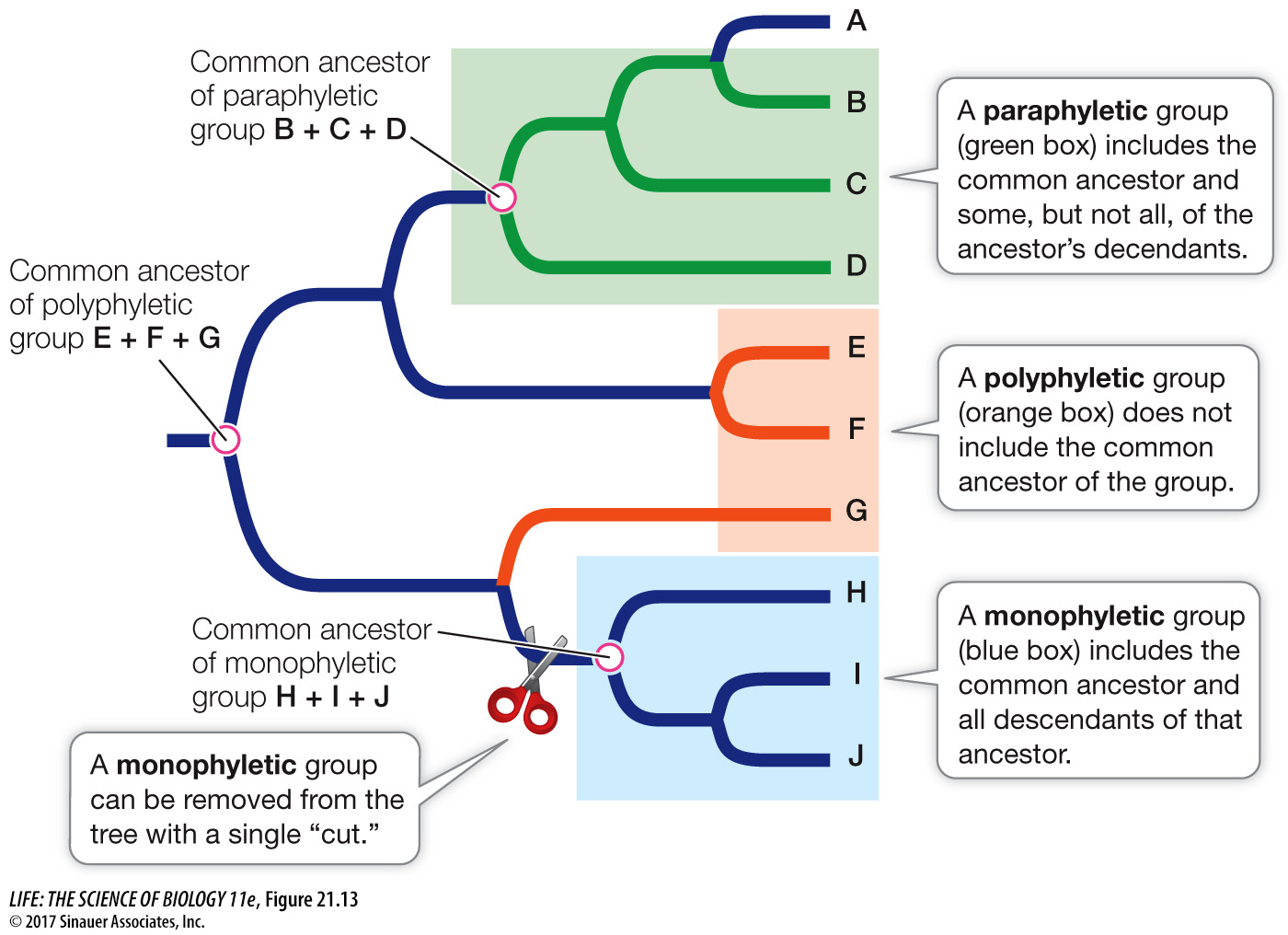Evolutionary history is the basis for modern biological classification
Today’s biological classifications express the evolutionary relationships of organisms. Taxa are expected to be monophyletic, meaning that the taxon contains an ancestor and all descendants of that ancestor, and no other organisms. In other words, a monophyletic taxon is a historical group of related species, or a complete branch on the tree of life. As noted earlier, this is also the definition of a clade. A true monophyletic group can be removed from a phylogenetic tree by a single “cut” in the tree, as shown in Figure 21.13.

Activity 21.3 Types of Taxa
www.life11e.com/
Note that there are many monophyletic groups on any phylogenetic tree, and that these groups are successively smaller subsets of larger monophyletic groups. This hierarchy of biological taxa, with all of life as the most inclusive taxon and many smaller taxa within larger taxa, down to the individual species, is the modern basis for biological classification.
Although biologists seek to describe and name only monophyletic taxa, the detailed phylogenetic information needed to do so is not always available. A group that does not include its common ancestor is polyphyletic. A group that does not include all the descendants of a common ancestor is referred to as paraphyletic (see Figure 21.13). Virtually all taxonomists now agree that polyphyletic and paraphyletic groups are inappropriate as taxonomic units because they do not correctly reflect evolutionary history. Some classifications still contain such groups because some organisms have not been evaluated phylogenetically. As mistakes in prior classifications are detected, taxonomic names are revised and polyphyletic and paraphyletic groups are eliminated from the classifications.